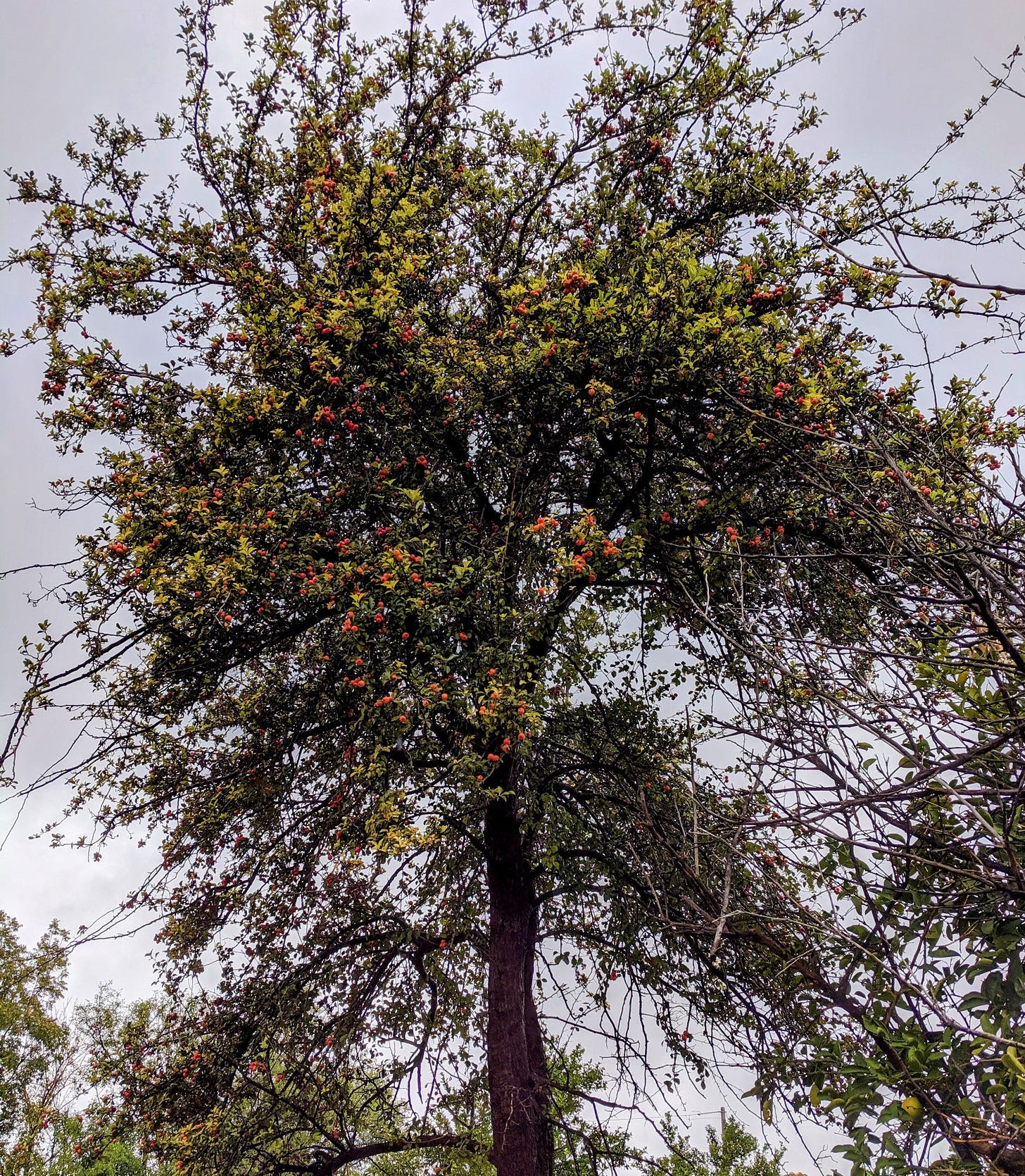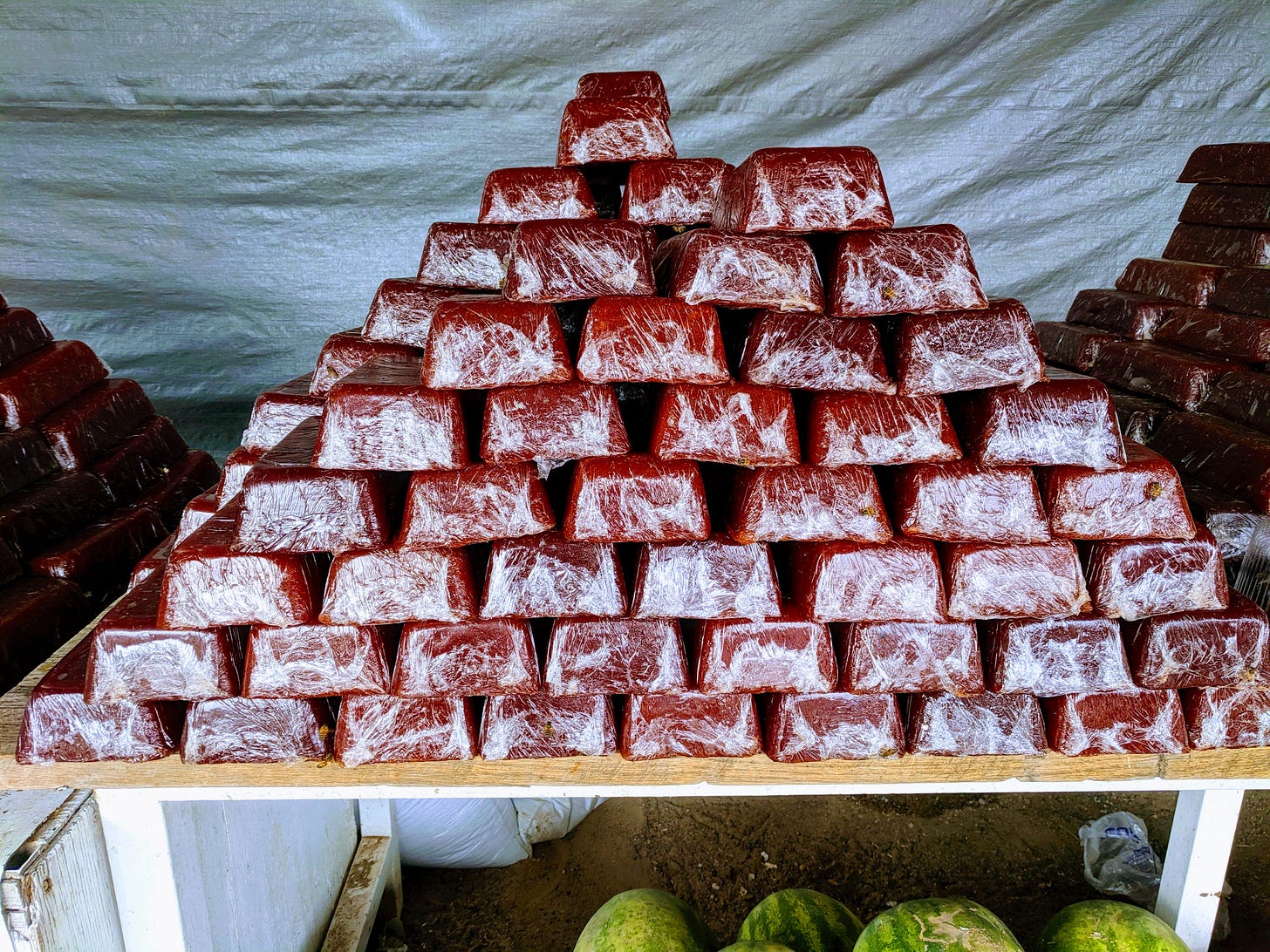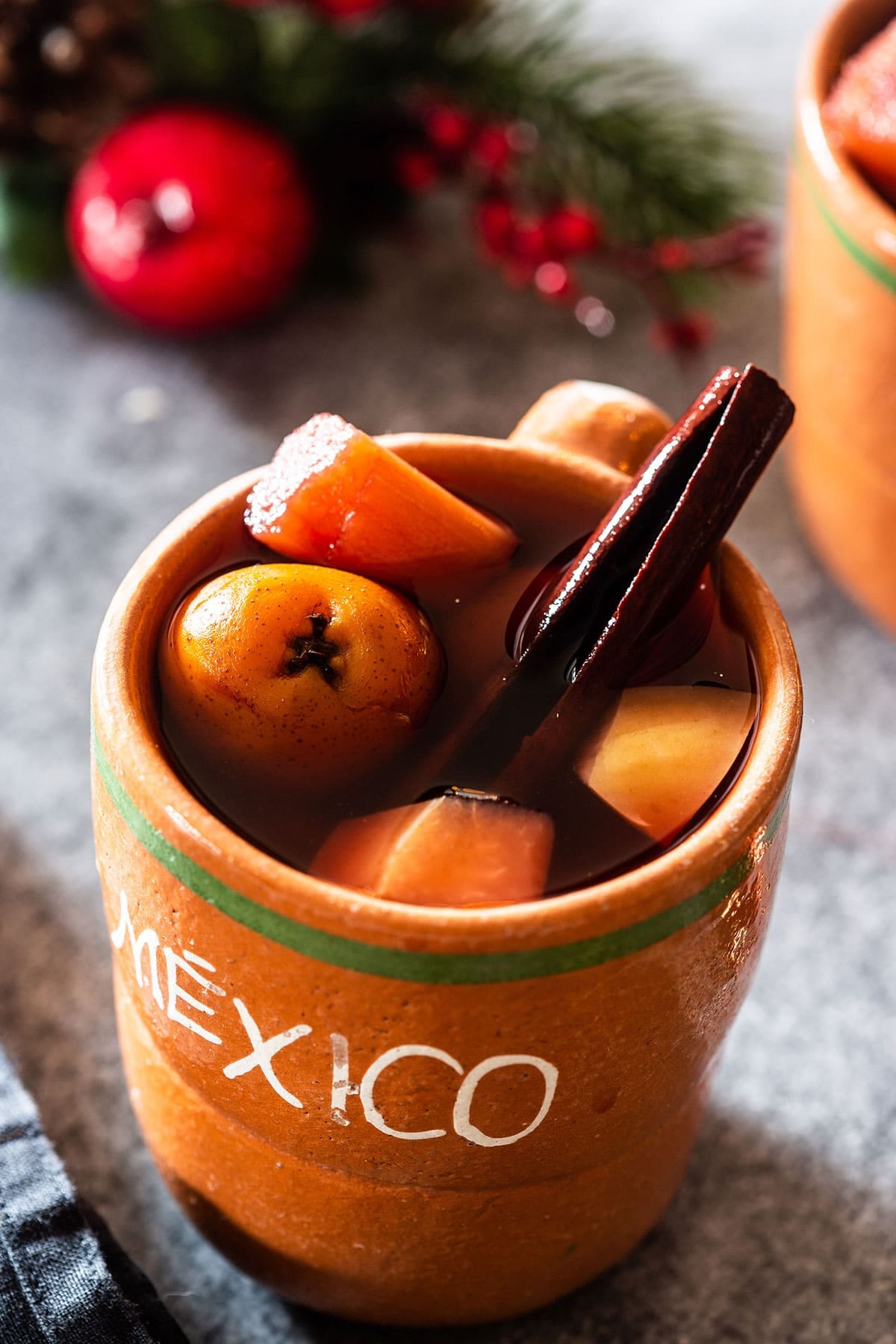Tejocote - the Mexican Hawthorn
A traditional Christmas treat for children from Sonora, Mexico to Guatemala - this is not the same fruit as a northern Hawthorn.
When most think of hawthorn they think of the small red haws of our northern latitude Crataegus species, known in Europe, Asia, and North America. In Ireland, this revered shrub, commonly known as whitethorn, occupies the 2nd aicme of the Ogham.
Numerous species exist often with subtle differences between them causing headache even for the most accomplished botanists. For example, nearly 1,000 species have been named for North America alone.
But, ultimately, they differ only in subtle ways. They are largely small trees to shrubs (hedges in Ireland and England) which put out delicate 5-petaled white flowers, tinted with rose pink, in early May, followed by the customary small, red haws found fully ripened in the late autumn, often just before the first freeze.
Long ago, before I knew what a Crataegus species was, I encountered tejocote in Guatemala. My new friend, Marcos, from the local Cakchiquel tribe informed me this tree bore sour to bland tasting fruit later in the year (he was showing me in April). (This appears to be the region where the cultivated tejocote have been derived from). The form of the tree was sprawling, measuring wider than tall, but not tall at all. I learned years later that this tree is the same species known in the far reaches of northern Mexico, Crataegus mexicana. In fact, the name tejocote likely derives from the Nahuatl name, texocotle, which is still used for this tree in parts of Mexico today. This name describes its sweet-sour flavor and its stone-like seeds.
What’s very interesting about this is that hawthorn is largely, if not entirely absent from a geographical area that forms a roughly 100 mile (or greater) wide band that traverses the Arizonan and New Mexican borders with Mexico (and to some extent, the Texas-Mexican border). To the north of this band, one can begin to find the traditional form of hawthorn, but to the south of this band that form is entirely replaced by the Mexican hawthorn with larger, yellow-orange fruits. In both cases, thorns are most often present, although some cultivars are thornless.
The flowers of C. mexicana also differ in that the top of the ovary is red and, as I’ve read, although the aroma may be pleasant upon first opening, they become fetid, reminiscent of rotting fish.
This far northern population is scarcely known outside of the areas it occurs and is almost entirely unaccounted for in botanical reviews, both online and in print.
See below a photo of one taken near the end of November about 50 miles south of the Arizona-Sonoran border, laden with fruit.
Tejocote (also known as manzanilla - not to be confused with chamomile) is a traditional treat for children from northern Mexico to Guatemala, especially during Navidad (Christmas season). It may form the base of what is called ponche - a sweet, cooked fruit cocktail made with fresh sugar cane, cinnamon, guava, apple and other ingredients.
Doña Olga told me years ago that children in Sonora would receive tejocote, fresh sugar cane, and guavas in their stockings for the makings of ponche. In Sonora, an adult beverage is made from the ponche by adding some alcohól pura de caña (95% cane alcohol) to make what they call rompope (I’ve only heard the word, never seen it written). This may also be added to atole (a thick corn drink) which may be drunk on the Fiesta de la Vírgen on December 12.

For ponche, the fruits are cooked, then peeled, but rarely de-seeded. Peeling each fruit takes a little time to accomplish, but removes the astringent skin to expose the pectin-rich flesh of the fruit which some love the texture of. I’ll cover the full process at the end of this article.
Eaten fresh, tejocote is a little astringent, slightly bitter, a little sour, and very slightly sweet. Undoubtedly, certain locales and varieties produce less bitter, more sweet fruit, but they are not particularly sweet, as is the case with all Crataegus fruits, or haws, that I’m aware of.
In Mexico, tejocote is made into salsa, atole, or other types of stewed fruit recipes with or without dairy.
Tejocote is also made into marmalade, or paste (cajeta), a type of solid fruit preserve, similar to what is done with quince, or membrillo. In southern Mexico, these treats are known as ates. This is delicious with Manchego, a firm sheep cheese with a buttery texture. Both being in the Rose family, tejocote and quince are similar in that they are often cooked and both contain a great deal of pectin. Although tejocote is rich in Vitamin C, any cooked preparations will likely degrade the heat-sensitive Vitamin C.
Most of the information about therapeutic applications of tejocote available online, which refer to the fruit, are focused on the nutrients (Vit C, B vitamins, calcium, iron, copper, magnesium, etc). Although the fruit of tejocote is nutritious, it also has an affinity for the respiratory system which is different, in my experience, than that of the more northern varieties of hawthorn (red haws) which are most commonly applied for cardiovascular health (excellent tonic) or digestion (Chinese medicine), either as tea, tincture, syrup, or paste.
One traditional remedy in central Mexico is to boil the fruit with pine bark, or lime peel, and drink for a wet, chronic cough. Similarly, a tea of the fruit, combined with wild cherry bark, elder flowers, eucalyptus, cudweed, and/or bougainvillea flowers is used to treat asthma. In addition to the respiratory applications, tejocote fruit has long been used as a diuretic throughout Mexico.
The leaves and flowers may also be used for digestive issues, or something akin to colic or irritability in infants and toddlers. Additionally, both the bark and root of tejocote are used therapeutically. The root is used for weight loss and urinary tract problems, and the bark is used similarly, along with respiratory applications.
On experiments on turtles, in Mexico, cardiotonic effects were most notable on leaf preparations, particularly tincture.
Other species known in Mexico (if not synonyms for C. mexicana) include. C. stipulosa,
Making Ponche con Tejocote
500g fresh tejocote
500ml water
500g cane sugar
2 small cinnamon sticks (or 1 Tbl cut & sifted cinnamon)
Granny Smith apple, cubed *optional
2 Tbl Prickly pear syrup for color and flavor
First step is to remove the skin. This is done by either pouring boiling water over the fruits, covering, and allowing to sit for 15-20 minutes, or simply simmering for 5 minutes.
Next, either drop the fruit in ice water, or strain the fruit from the water and allow to cool. This will keep them from getting to sticky/slimy from the abundant pectin. Simply peel each fruit by hand, discarding the skin. You can poke holes in each fruit to help it absorb the sugar and cinnamon flavors while stewing.
Once the fruits are all peeled, set the water to boil along with the sugar and cinnamon. Add the tejocote and bring to a simmer. Other fruits can be added such as apple, guava, or fresh sugar cane. Allow to simmer, covered for at least 30 to 45 minutes. The syrup can be as thick or thin as you like. Both the sugar and pectin will cause it to thicken over time.
Some traditional recipes add a “strawberry extract” to make the syrup red, but instead I use a couple Tbl of prickly pear syrup to achieve this.
Allow the decoction to completely cool before serving in bowls with spoons. However, some do prefer to serve it warm.
You can find a variety of recipes like this one that include a much wider range of fruits, spices, and herbs.
¡Felíz Navidád!
For more information about my upcoming 2025 Intro to Foraging in the Sonoran Desert course, CLICK HERE.













